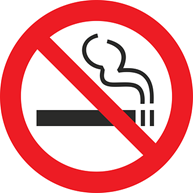Archives
Women Smoked Less Than Men but Were More Severely Affected by COPD
 While women reported smoking less than men, they were found to be more severely affected by chronic obstructive pulmonary disease (COPD).
While women reported smoking less than men, they were found to be more severely affected by chronic obstructive pulmonary disease (COPD).
Women with COPD reported smoking fewer cigarettes than men but experienced worse symptoms, reported lower quality of life, and suffered more frequent and severe acute exacerbations because of progressive lung disorder, according to an abstract presented at the 2019 American Thoracic Society (ATS) International Conference.
“Women comprise 50 percent of the U.S. COPD population and represent a growing proportion of incident cases,” researchers said. “Risk factors for incident COPD, clinical phenotype and prognosis differ by sex.”
Researchers analyzed data from the Subpopulations and Intermediate Outcome Measures in COPD study (SPIROMICS) to examine how COPD outcomes differed by gender. Per the report, SPIROMICS was a prospective cohort study designed to identify COPD subgroups and intermediate markers of disease progression. Considering nearly half of its participants were women, and it had collected data on COPD morbidity measures and hormonal exposure history, researchers determined it was distinctively poised for their analysis.
Study investigators examined baseline data from 1,832 SPIROMICS participants with more than 20 pack years of smoking history and COPD. Markers of COPD morbidity included respiratory-specific quality of life measures (QoL) from scores from the Saint George’s Respiratory Questionnaire (SGRQ), general QoL measures from scores from the 36-Item Short Form Health Survey version two, recorded distance on a six-minute walk test, symptom scores from the modified Medical Research Council questionnaire (mMRC) and COPD Assessment Test (CAT), and both the frequency and severity of acute exacerbations.
Frequent acute exacerbations were defined as two or more suffered per year. Researchers considered an exacerbation to be severe if it resulted in hospitalization or an emergency room visit.
Approximately 42 percent (781) of individuals included in the analysis were women. Age, race, smoking status and predicted forced expiratory volume were similar between women and men. The mean number of reported smoking pack-years was 48 for females and 56 for males.
Researchers found that females were independently associated with:
- Greater respiratory impairment
- greater general impairment, and
- shorter distances walked.
Researchers also found that women had higher chances of hypoxemia and were more likely to be symptomatic. They also experienced a greater frequency of acute exacerbations and more severe acute exacerbations than men.
Patient Age, Smoking Influences COPD Severity
 Age and smoking duration are related to the severity of chronic obstructive pulmonary disease (COPD) symptoms, according to a new report. Investigators from Seoul, South Korea, said they identified more than 17,000 COPD patients between 2005 and 2015 to analyze the effect of aging on the occurrence of cigarette smoking-induced COPD.
Age and smoking duration are related to the severity of chronic obstructive pulmonary disease (COPD) symptoms, according to a new report. Investigators from Seoul, South Korea, said they identified more than 17,000 COPD patients between 2005 and 2015 to analyze the effect of aging on the occurrence of cigarette smoking-induced COPD.
Investigators evaluated patients’ smoking status using a lifestyle intervention program and then measured the occurrence of COPD using the Korea National Health and Nutrition Examination Survey.
The study found that with the decrease in tobacco use, may decrease the prevalence of COPD. However, it does not appear to be the case worldwide.
Additionally, the economic burden of COPD continues to increase. In Korea, healthcare costs per person were more than three times higher in patients with high-grade COPD than those without it: $3,744 versus $1,183.
The investigators divided their study participants into four groups: young age/short smoking duration; young age/long smoking duration; old age/short duration; old age/long duration. The age line was younger than 50, or greater than 60 years, while smoking duration was short if it was less than five years and long if it was greater than 20 years.
From there, the investigators were left with 627 eligible COPD patients. The investigators used body mass index (BMI), the number of cigarette packs per day smoked (multiplied by the number of years smoked), and current smoking status (current or ex-smoker) as control variables.
Male COPD patients outnumbered the females by three to one. There were more mid-level severity COPD patients (such as level two or three) than there were severe patients (level four), researchers said. There were also fewer current smokers than ex-smokers (298 compared to 329, respectively). The average length of smoking duration was 13 years.
The investigators found that age had significant positive main effects. With increasing age, the severity of COPD increased. The young age/short duration patients experienced less severe COPD than the young age/long duration patient group.
Additionally, as patients smoked 20 years longer, they experienced malfunction of lungs and more severe COPD, which makes sense.
“The combined effect of smoking duration and age were found highly significant among subjects over 20 years aged smoking group for COPD severity,” the researchers reported.
The effects of age and smoking duration when combined were also a factor in COPD severity. Subjects experienced more severe COPD as they lived longer while smoking, and the effect was aggravated when aging was combined, they explained.
“Previous studies have demonstrated that the prevalence of COPD and its risk factors had no association, but there seemed to be a trend among patients who smoked—they were not sensitive to air condition or environmental factors, the study authors explained,” the researchers reported.
“Our data show that COPD patients exhibit aging and smoking duration related severity,” the authors concluded. “These two characteristics were significantly affected on the lung function of COPD patients. Especially, the smoking duration is exaggerated in the presence of old age for older COPD patients.”
The study, “Effects of Aging and Smoking Duration on Cigarette Smoke-Induced COPD Severity,” was published in the Journal of Korean Medical Science.
Vaping Linked to a Noisy, Foreboding Consequence of Poor Lung Health
 Electronic cigarettes are marketed as less harmful alternatives to cigarette smoking, but researchers are increasingly concerned about the potential long-term health consequences of vaping. A study released recently in the journal Tobacco Control adds to the growing number of reasons the phenomenon is riskier than it might appear.
Electronic cigarettes are marketed as less harmful alternatives to cigarette smoking, but researchers are increasingly concerned about the potential long-term health consequences of vaping. A study released recently in the journal Tobacco Control adds to the growing number of reasons the phenomenon is riskier than it might appear.
According to scientists from the University of Rochester and the Roswell Park Comprehensive Cancer Center, people who vape are nearly twice as likely to experience wheezing compared to people who don’t regularly use tobacco products. Wheezing -- which is typically caused by inflammation and narrowing of the airway between the throat and lungs -- is often seen as a precursor to serious health conditions, including lung cancer and heart failure.
“The take-home message is that electronic cigarettes are not safe when it comes to lung health,” study author Deborah Ossip, Ph.D., said in a statement. “The changes we’re seeing with vaping, both in laboratory experiments and studies of people who vape, are consistent with early signs of lung damage, which is very worrisome.”
The study identifies the correlation of vaping and wheezing. A previous study in a 2017 paper in PLOS One found a link between e-cigarette use and greater odds of wheezing and shortness of breath.
When comparing non-users to those who exclusively vape, researchers found that the risk of wheezing and related respiratory symptoms significantly increased. For example, adult vapers were 1.7 times more likely to experience difficulty breathing, but vapers had lower odds of wheezing compared to those who only smoked cigarettes and those who used both tobacco products.
“Promoting complete cessation of both smoking and vaping will be beneficial to maximize the risk reduction of wheezing and other related respiratory symptoms,” the study’s authors said. “Importantly, we reported that ex-smokers who did not vape … still have significantly elevated risk of wheezing and other related respiratory symptoms, compared with never smokers, suggesting long-term impact of prior smoking.”
The Centers for Disease Control and Prevention reported that, in 2018, vaping increased by 78 percent among ninth- to twelfth-graders and 48 percent in sixth- to eighth-graders. In 2017, more than two million middle and high school students were regular users of e-cigarettes.
Researchers conducting the study said they are concerned that the study indicates that if young people continue to vape, they will develop serious health consequences.
Smoking cessation may reduce risk of rheumatoid arthritis
 Analysis of data from the Nurses’ Health Studies demonstrates for first time that behavior change can delay or even prevent the most severe form of rheumatoid arthritis.
Analysis of data from the Nurses’ Health Studies demonstrates for first time that behavior change can delay or even prevent the most severe form of rheumatoid arthritis.
Smoking is an important risk factor for developing the most common form of rheumatoid arthritis (RA) and other inflammatory diseases, but a critical question remains: Can those who quit smoking delay or prevent RA or have they permanently and irrevocably altered their risk of the disease? Given that hypothesis, a new study by investigators from Brigham and Women's Hospital leverages data from the Nurses' Health Studies led to new research with the findings recently appear in Arthritis Care & Research.
Sustained smoking cessation demonstrates for the first time that changing behavior can reduce risk of developing seropositive RA, the more severe form of the disease. “Ours is the first study to show that a behavior change can reduce risk for seropositive RA,” said corresponding author Jeffrey Sparks, MD, MMSc, of the Division of Rheumatology, Immunology and Allergy at the Brigham. “Risk isn't just about genes and bad luck – there’s a modifiable environmental component to the onset of this disease and a chance for some people to reduce their risk or even prevent RA.”
Sparks and colleagues used data from the original Nurses’ Health Study, established in 1976, and Nurses’ Health Study II, a second cohort established in 1989. Both groups included RNs from across the U.S. who filled out health surveys every two years with questions that included information about smoking and health status.
From among more than 230,000 participants in this analysis, the researchers found that 1,528 developed RA. The team identified 969 “seropositive” as opposed to “seronegative” cases. Patients with seropositive RA have auto-antibodies related to RA, and generally have more severe disease manifestations, including joint deformities and disability.
For seropositive RA, risk began to go down about five years after women quit smoking and continued to decrease the longer they stayed non-smokers. Participants who quit for good reduced their risk of seropositive RA by 37 percent after 30 years.
The team did not find any association between seronegative RA and smoking, adding further evidence to the theory that seronegative and seropositive RA may be two distinct diseases with distinct risk factors.
"One of the lessons here is that it takes sustained smoking cessation to reap the full benefit," said Sparks.
Sparks thinks that smoking may affect a preclinical disease process that leads to the formation of RA-related auto-antibodies and increases inflammation.
Smoking cessation strategies targeting stress reduction may be more successful in women
 It may be the case that men have a better shot than women at quitting smoking if they take part in a nicotine replacement therapy. According to the results of a new study, women are 31 percent less likely to quit smoking successfully in such cases, and that those female smokers participating in such programs said they experienced more stress and cravings for cigarettes than men after viewing cellphone-delivered stress-inducing images.
It may be the case that men have a better shot than women at quitting smoking if they take part in a nicotine replacement therapy. According to the results of a new study, women are 31 percent less likely to quit smoking successfully in such cases, and that those female smokers participating in such programs said they experienced more stress and cravings for cigarettes than men after viewing cellphone-delivered stress-inducing images.
Although all smokers making a cessation attempt would likely benefit from interventions to reduce stress, these findings suggest that women could receive particular benefit.
According to the National Institute of Drug Abuse, women crave cigarettes more when they experience stress even though that finding has not been clearly replicated in a real-world setting. In an article published online by Nicotine & Tobacco Research, researchers at the Medical University of South Carolina (MUSC) report the findings of a real-world study in 177 smokers. The females responded negatively to certain cues -- cues are images that induce stress, similar to news images of violence or war.
However, researchers said that no gender differences in craving were noted after viewing cellphone-delivered smoking cues. Smoking cues are images that suggest smoking behavior, such as a photograph of a cigarette or a person smoking.
“These findings suggest that improving quit outcomes in women may require gender-specific cessation strategies,” researchers said.
“We know that not all existing treatments are equally effective for men and women," says Rachel L. Tomko, Ph.D., assistant professor in the Department of Psychiatry and Behavioral Sciences at MUSC and first author on the article. “That could be because they find different aspects of smoking rewarding and relieving, and there are different things that maintain their smoking. Our findings suggest that stress may be one thing that maintains smoking more for women than for men.”
Research suggests that, if smoking were about nothing but nicotine, everyone would respond “beautifully” to nicotine replacement therapy, but MUSC researchers think things are more nuanced and complex than that.
Participants in the real-world study viewed eight images each day (four sets of two) for two weeks, including smoking cues, stress cues and neutral images. Each time they received a pair of images, they completed a form assessing their stress, negative emotion and craving levels before viewing the images (their baseline value) and after viewing each image. They also tracked the number of cigarettes they smoked each day.
Because women smoke more in response to stress and environmental triggers, their smoking patterns could be expected to vary more than men's. However, the MUSC team found no difference in the number of cigarettes smoked per day for male and female smokers.
"Fortunately, showing smokers stress and smoking cues did not result in an overall increase in cigarettes smoked," says Tomko. "This is likely because smokers are already exposed to similar images on a daily basis. However, it is surprising that women did not have more day-to-day fluctuations in their number of cigarettes than men. It is possible that minor, everyday stressors result in women smoking a cigarette a bit sooner than they would have otherwise but does not impact the overall rate of smoking. We hope to test this in future research."
More broadly, they will continue to map out the gender and other differences that affect how smokers respond to treatment and use that knowledge to better craft cessation therapies.
Smoking Cessation Key Component of Cancer Moonshot Program
 Those smokers who have been diagnosed with cancer and quit smoking upon diagnosis appear to experience improved outcomes and survival in a large percentage of patients. Even so, smoking cessation treatment remains uncommon in cancer care. Even though this is the case, an initiative of the National Cancer Institute's "Cancer Moonshot" program is being designed to jump-start smoking cessation treatment at NCI-designated cancer centers.
Those smokers who have been diagnosed with cancer and quit smoking upon diagnosis appear to experience improved outcomes and survival in a large percentage of patients. Even so, smoking cessation treatment remains uncommon in cancer care. Even though this is the case, an initiative of the National Cancer Institute's "Cancer Moonshot" program is being designed to jump-start smoking cessation treatment at NCI-designated cancer centers.
In 2017, 22 of these centers received funding from the program to “begin or expand their smoking cessation-treatment programs,” and in 2018 an additional 20 centers received the funds, amounting to
$500,000 over two years for each center. The program, known as the Cancer Center Cessation Initiative, brings about evidence-based tobacco-dependence treatment into cancer treatment using electronic health record (EHR) technology to facilitate the integration, the New England Journal of Medicine notes.
“The initiative has the potential to transform clinical cancer care so that evidence-based smoking-cessation treatment is an integral component of care for every person with cancer who smokes,” wrote Robert T. Croyle, PhD, and Glen Morgan, PhD, both of the NCI, and Michael C. Fiore, MD, of the University of Wisconsin School of Medicine and Public Health's National Center for Tobacco Research and Intervention.
“We have some powerful new data that tell us patients who continue smoking during cancer treatment tend to have more side effects,” he said. “And we also know that the likelihood of developing a second cancer is markedly increased among people who continue to smoke after being cured of a cancer. We are sharing this data with oncologists to emphasize that smoking cessation should be a core part of cancer care.”
The survey’s authors wrote in the magazine that that “while smoking causes roughly a third of all cancer deaths, clinicians may not appreciate the harms caused by continued smoking among patients with cancer.”
Shockingly, the authors suggest that some clinicians believe that they are inadequately trained to deliver effective treatment for tobacco use, and on top of this, the patients, the caregivers feel, “will resist such treatment or that it will not be effective," they wrote.
Also, some clinicians say they face the fear of placing attention on smoking by their patient and possibly exacerbating the “guilt and shame” that smokers often feel after the development of cancer. “Such factors, along with resource limitations, have hindered the delivery of effective smoking-cessation treatments in cancer patients for too many years,” the authors reported.
This part of the new clinical treatment center initiative, all patients who smoke while receiving treatment at one of the 42 centers are be urged to quit, as well as are offered evidence-based cessation treatment, and tracked to assess treatment outcomes. Additionally, each of the centers is required to plan for the continuation of this program for an additional two years after NCI funding ends.
The idea behind the plan is to learn from the success of the previous two years and disseminate the experience to other cancer clinics.
Addressing Smoking Cessation in Asthma

An estimated 20 percent of individuals with asthma smoke cigarettes, new findings suggest. And compared with non-smokers with asthma, smokers with asthma have elevated morbidity and mortality, worse asthma control, more frequent exacerbations and severe symptoms, and a greater incidence of life-threatening attacks, Pulmonology Advisor reported.
Additionally, individuals who smoke are more likely to experience a more “rapid decline in lung function and permanent chronic airflow obstruction,” with as much as threefold risk of airflow obstruction in patients with non-atopic asthma, in particular. New adult-onset asthma was 20 percent to 40 percent higher in active and passive smokers compared with non-smokers with asthma.
Asthmatic smokers and former smokers, though, are typically excluded from trials investigating asthma therapies so there is usually a lack of clarity regarding optimal treatment options for these patients.
Smoking Cessation in Patients with Asthma
Smoking cessation plans in patients with asthma have been shown to reduce asthma symptoms, and lead to improved lung function and quality of life, as well as reduced use of rescue medications, improved airway responsiveness and decreased hyperactivity.
“A plausible explanation for the improvement in various outcomes is that there is a gradual and progressive reduction of pro-inflammatory effects in the airways related to the decreased inhalation of cigarette smoke,” researchers offered.
The study also suggested that clinicians inform their patients that “numerous cessation attempts may be necessary” before they are able to quit altogether, but that clinicians should be familiar with basic behavioral techniques to help patients navigate strategies to handle smoking triggers and withdrawal symptoms. Smoking cessation agents, buproprion and varenicline, have been shown to increase cessation success rates, which patients may be interested in pursuing as quit options.
For example, a separate study examined the use of varenicline in smokers with asthma and found increased rates of cessation and improved airway hyper-responsiveness compared with placebo.
Treating Asthmatic Smokers
While corticosteroids should generally be included in the treatment strategy for most patients with asthma, study results indicate that up to one-third of asthmatic smokers do not respond to these drugs.
“A possible mechanism for the corticosteroids insensitivity or resistance may be the increased airway mucosal permeability in smokers, which could lead to increased clearance of inhaled corticosteroids from the airways,” the review authors pointed out in a statement.
Other approaches may be more effective, however.
Click here the read the full article at Pulmonology Advisor.
Occasional Smokers Face Serious Health Risks
 A new report from researchers at the Royal College of Physicians of Ireland appears to point to findings suggesting that even occasional smokers are at a significantly higher risk of lung cancer, cardiovascular disease, fertility problems and a host of other health problems -- compared with non-smokers.
A new report from researchers at the Royal College of Physicians of Ireland appears to point to findings suggesting that even occasional smokers are at a significantly higher risk of lung cancer, cardiovascular disease, fertility problems and a host of other health problems -- compared with non-smokers.
This includes even those individuals that only occasionally smoke. Occasional smoking, defined in the report as any smoking that occurs on a less than daily basis, is still perceived as less dangerous than smoking every day, which might not be the case.
In the United States, estimates suggest that about 15 percent of the adult population smokes, and about 25 percent of those smokers do so occasionally. Such smokers are difficult to reach via current educational materials as smoking cessation programs and efforts are usually focused on daily smokers.
In another survey, investigators found that only about 65 percent and 33 percent of U.S. adolescents believe that light and intermittent smoking, respectively, are very harmful. About 25 percent of folks said intermittent smoking leads to no or little harm.
The Royal College of Physicians of Ireland study also found that occasional smokers were more likely to be young adults with a higher level of income and education compared with daily smokers, and also were more likely to start later, more likely to be from an ethnic minority, and more likely to be female.
Many occasional smokers do not see themselves as smokers.
“Those who smoke occasionally have almost a 40 percent greater risk of dying from smoking-related disease compared with non-smokers,” said Dr. Desmond Cox, chair of the Policy Group on Tobacco at RCPI, Dublin, Ireland. “They carry almost the same risk of cardiovascular disease as daily smokers. In regard to lung cancers in women ages 35 to 49, those who smoke between one and four cigarettes a day are five times more likely to develop lung cancer when compared to non-smokers. In men, the risk is threefold.”
The organization offered the following recommendations to reduce smoking:
- Better awareness about the dangers of occasional smoking is needed among the general public and healthcare professionals.
- Health promotion campaigns on the dangers of any pattern of smoking and stricter smoking bans need to be implemented to assist in decreasing the number of people who occasionally smoke.
- Improved understanding on why occasional smokers initiate and continue to smoke in this pattern is required.
- The role of different smoking cessation techniques to address the behavioral patterns of occasional smokers need to be examined.
“Other lifestyle choices also need to be addressed,” Dr. Cox said in a statement. “It is vital that there is increased awareness of the health implications of occasional smoking. Those in this category often feel no great need to give up for health reasons and do not perceive themselves as smokers.”
Why More Americans Quitting Smoking
 More Americans are continuing to extinguish their cigarettes for good. The overall cigarette smoking rate among U.S. adults has hit an all-time low, according to the U.S. Centers for Disease Control and Prevention (CDC) with preliminary data from the National Health Interview Survey showing smoking rates declining from 15.5 percent in 2016 to 13.9 percent in 2017.
More Americans are continuing to extinguish their cigarettes for good. The overall cigarette smoking rate among U.S. adults has hit an all-time low, according to the U.S. Centers for Disease Control and Prevention (CDC) with preliminary data from the National Health Interview Survey showing smoking rates declining from 15.5 percent in 2016 to 13.9 percent in 2017.
"Cigarette smoking among adults has been on a downward trajectory for decades," said Brian King, deputy director for research translation in the CDC's Office on Smoking and Health. "It's the lowest percentage we've seen since we started monitoring smoking rates in 1965."
However, despite the declines and preliminary 2017 data, there are about 34 million Americans that are still smoking. Staggeringly, almost half a million people die each year because of cigarette smoking and secondhand smoke exposure, the latest CDC data suggests.
Five decades ago, when the first US surgeon general’s report on smoking and health was released, about 42 percent of American adults smoked. That 1964 report found that smoking causes lung and laryngeal cancer and is a major cause of health conditions, such as cardiovascular disease, ushering in policies that would change the tobacco landscape.
But personal health only had so much to do with the deep decrease. As became quickly the case, hitting smokers where it hurts the hardest – their wallets – has led to a major decline. Efforts also included anti-smoking campaigns and policies to unfold, plus treatments and services to help people tackle the highly addictive products. Previously, such tools and resources that didn't exist. Smoke-free laws, and access to cessation programs as powerful levers aided by health advocacy groups.
Money raised from taxes funded ads that showed the adverse health impacts of tobacco, often in great detail, as well as the rights of being able to smoke at work, bars or public places revoked in place of smoke-free environments have made it easier for people to not smoke.
Insurance-covered cessation programs also haven given smokers access to the resources and tools they needed to quit.
But education efforts, particularly aimed at children – spreading the word about tobacco's effects, and health warnings on products -- beginning in 1965 has continually reiterated the fact that smoking is deadly, dirty and those who do so essentially put themselves in the position of a modern-day pariah. Younger smokers are not taking it up as has been the case in generations past.
However, as traditional channels of smoking may changing, the market is diversifying thanks to the emergence of products such as e-cigarettes, the health effects of which researchers are still working to understand as their popularity among young people grows. According to the CDC, 11.7 percent of high schoolers in 2016 said they had used an e-cigarette, up from 1.5 percent in 2011. Newer approaches will be needed to prevent tobacco use and nicotine addiction in a new generation, experts say.
"There's an emerging body of novel interventions and strategies, such as increasing the age of sale of tobacco to 21, including e-cigarettes, and prohibiting the sale of flavored tobacco, which are percolating at the local level," King said. But he is optimistic that smoking rates will continue their downward trend.
Study: ENDS Not Effective as Tobacco Cessation Method
 Electronic nicotine delivery systems (ENDS) users who also smoke cigarettes are not more likely to quit smoking than smokers who don't use ENDS devices, a study by Georgia State University's (GSU's) School of Public Health claims.
Electronic nicotine delivery systems (ENDS) users who also smoke cigarettes are not more likely to quit smoking than smokers who don't use ENDS devices, a study by Georgia State University's (GSU's) School of Public Health claims.
Published in the July 9 issue of the PLOS ONE journal, researchers report that they found no evidence to indicate that ENDS used in the United States are effective at “helping cigarette smokers quit at a population level, even though anecdotally, some smokers have said they found ENDS useful in their cessation efforts.”
Researchers conducted a population-based, prospective cohort study of a random probability sample of 1,284 U.S. adult smokers recruited in 2015 and re-contacted a year later. At the end of the one-year study, researchers found that 90 percent of "dual users" (participants who used both ENDS and traditional cigarettes at the beginning of the study at baseline) were still smoking.
At the end of the study, researchers found that the odds of quitting smoking were lower for those who used ENDS (9.4 percent) compared with smokers who did not use ENDS (18.9 percent). The researchers also found that smokers who used ENDS daily at any point during the study were less likely to quit smoking than nonusers.
Additionally, 90 percent of dual users were still smoking at follow-up. Among those dual users, about 54 percent were smoking cigarettes and using ENDS after a year, and more than 37 percent were still smoking cigarettes, but had stopped using ENDS.
"Many smokers are using ENDS in their smoking quit attempts, but these devices may not be providing a sufficiently satisfying nicotine delivery and overall user experience to completely supplant their smoking," said lead author Scott Weaver, Ph.D., assistant professor of epidemiology and biostatistics at GSU, in a news release.
Among smokers who didn't use ENDS, more than 73 percent smoked daily compared with about 71 percent among smokers who did use ENDS. No statistically significant difference was seen between daily smokers who used ENDS at any point during the study and those who did not.
Researchers did find, however, that users of ENDS were more likely to try to quit smoking, but this did not translate into greater success.Study participants who specifically said they were using ENDS to help stop smoking were actually less likely to quit than those who didn't use the devices.
Of the 1,081 baseline smokers who remained in the study at the one-year mark, 858 completed the follow-up survey.
Click here to read the full article on the American Academy of Family Physicians site.




